1960s
Shave-O-Mat
Harry Thalheim believed that “a need has existed for a long time for a shaving emporium where people may shave cheaply and rapidly at all hours of the day and night.” So, in 1964 he patented the Shave-O-Mat (US Patent No. 3,120,886). It was a coin-operated shave-yourself establishment, open 24 hours a day.Did this address some kind of market need in the 1960s? Were there men who, in the middle of the night, really wanted to shave but couldn’t?
I'm guessing not, because, as far as I can tell, Thalheim's Shave-O-Mat never opened.
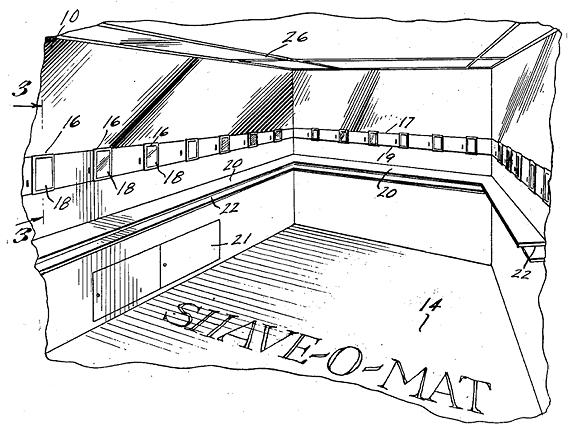
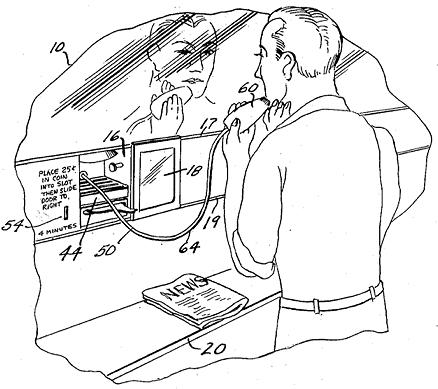
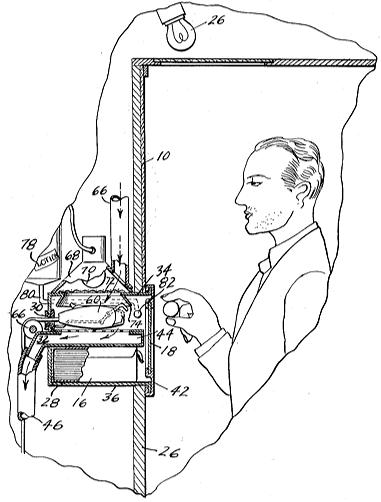
Posted By: Alex - Sun Feb 02, 2020 -
Comments (0)
Category: Inventions, Patents, 1960s, Hair and Hairstyling
The Beatlettes
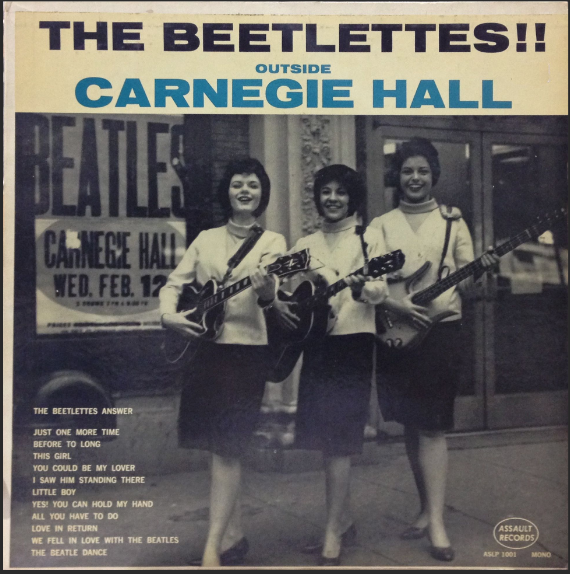
Mystery queens of Beat music! No one knows who the Beattle-ettes were. They were one more answer record knocked off responding to the maelstrom of the Beatles' invasion of New York in 1964. (It was rushed out so fast, in fact, that they got the spelling of the boys' name wrong, with an extra 'T'!) But it is sure that they were produced by "Shadow" Morton just before his breakout success with the fabulous Shangri-La's. Because of this, and the definite New York moxie of the singers, many believe it might actually be the Shangs! This would be cool as all hell, of course, but no one knows for sure. What we do know is this is a rockin' two minutes of punky Beat music that sticks in your head all day.
Posted By: Paul - Fri Jan 31, 2020 -
Comments (1)
Category: Music, Homages, Pastiches, Tributes and Borrowings, 1960s
What was under Beetle Bailey’s cap?
According to Brian Chapman, over at the Legends & Rumors blog, Beetle Bailey was arguably “the syndicated comic strip most often copied in underground and anti-war papers during the Vietnam War era.” And the most-copied strip from Beetle Bailey was one that originated as a satire in Mad magazine. It was popular because it revealed what was under Beetle Bailey’s cap: a message written on his forehead saying, “Get out of Vietnam.”Brian traces the many publications that this particular strip appeared in. Along the way, the strip was frequently redrawn, and eventually new forehead messages were substituted, such as "Go to hell Lifer" or "FTAF" (F the Air Force).
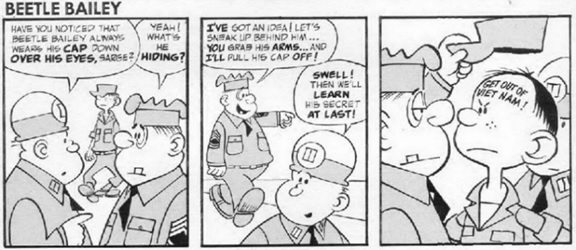
The original strip, from Mad magazine (Apr 1969)
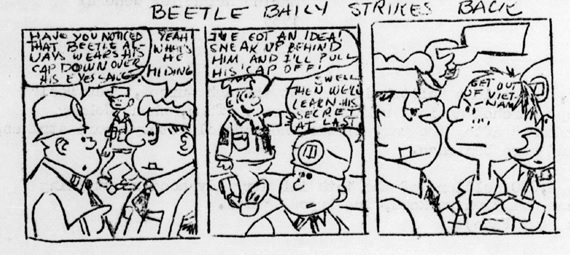
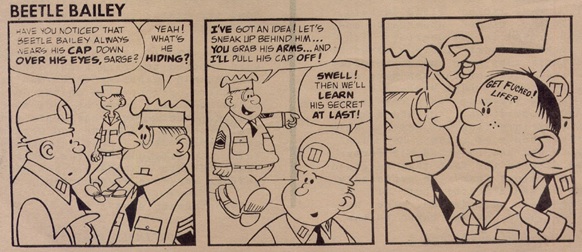
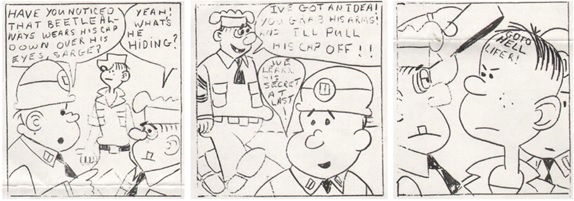
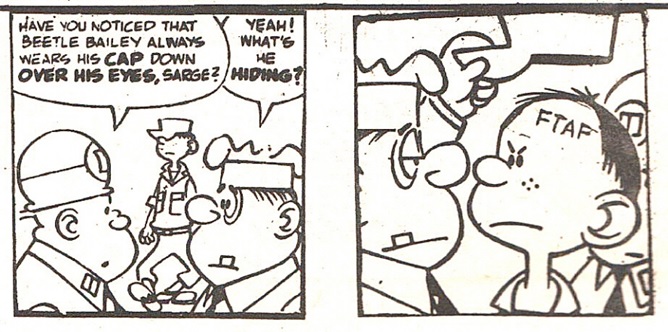
Posted By: Alex - Thu Jan 30, 2020 -
Comments (1)
Category: Comics, 1960s
Khrushchev’s Top Secret Coloring Book
Finally, some artwork that might amuse the Soviet dictator, from the great Jack Davis.Buy your copy through the link below.

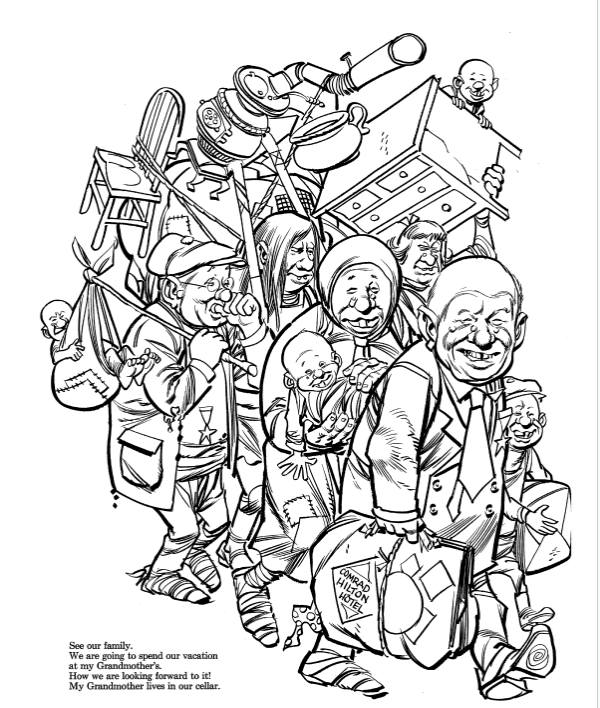
Posted By: Paul - Thu Jan 30, 2020 -
Comments (0)
Category: Art, Dictators, Tyrants and Other Harsh Rulers, Books, 1960s
Fizz Bowling
A drinking game of the 1960s, invented at European ski lodges:
The Montana Standard - Feb 10, 1963
A few more details from the Akron Beacon Journal (Feb 6, 1963):
Some googling reveals that it's now possible to buy gin bottles shaped like bowling pins. Available from Amazon for $18.99 (empty, you add your own gin). However, they're made of glass, so probably not great for fizz bowling.
I'm guessing the people back in the 60s were playing with minis, rather than full-size bottles.

Posted By: Alex - Wed Jan 29, 2020 -
Comments (1)
Category: Games, Sports, 1960s, Alcohol
Magazine for the nearsighted
The magazine Leisure debuted in 1963. It was distributed exclusively at barbershops and featured articles intended to be of interest to male readers, on subjects such as hunting, fishing, boating, camping, golf, skiing, travel, hobbies, photography, etc. But what made the magazine unique was that all the articles were printed in extra large type. This was so that barbershop customers who took off their glasses to get their hair cut could still read the magazine.I’ve found several newspaper articles referencing the existence of this magazine, but I haven’t been able to find any copies of it archived anywhere. It doesn’t even appear in library databases.

Eureka Humboldt Standard - Sep 18, 1963
Posted By: Alex - Fri Jan 24, 2020 -
Comments (4)
Category: Magazines, 1960s, Eyes and Vision
Eefin Music
NPR’s Jennifer Sharpe has defined eefin music as "a kind of hiccupping, rhythmic wheeze that started in rural Tennessee more than 100 years ago."Back in the early 1960s, some in the record industry thought that eefin was going to be the next big thing. Though the hopes for it never panned out. The biggest eefin hit was "Little Eefin Annie" by Joe Perkins, which reached #76 in the charts in 1963.
But if you're a fan of Benny Hill, you might appreciate the song 'Eefin Nanny Stomp,' released in 1960 by Billy Hutch His Harmonica And Orchestra. You can clearly hear the Benny Hill theme (Yakety Sax) during parts of it.
Posted By: Alex - Thu Jan 23, 2020 -
Comments (5)
Category: Music, 1960s
Rocket Robin Hood
Wikipedia page.
Posted By: Paul - Wed Jan 08, 2020 -
Comments (3)
Category: Ineptness, Crudity, Talentlessness, Kitsch, and Bad Art, Regionalism, Science Fiction, Cartoons, 1960s
Follies of the Madmen #460
Those are growing underwater plants surrounding the buried woman. This is plainly a mermaid, a superhuman, or an unnaturally happy Mob victim.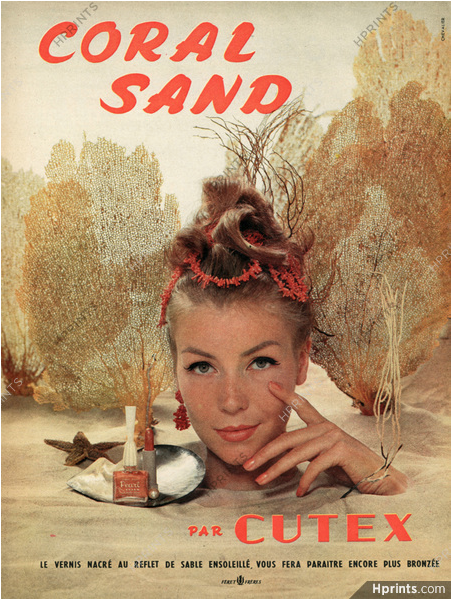
Source.
Posted By: Paul - Mon Jan 06, 2020 -
Comments (0)
Category: Business, Advertising, Cosmetics, Death, 1960s
The Man Can
Its formal name was the “man-carried auto-navigation device,” but it went by the nickname “Man Can.” The Martin-Marietta Corporation received patent no. 3,355,942 for it in 1967.It was a device designed to help soldiers avoid getting lost. The patent offered this description:

It combined a compass and a pedometer. A GI would record his initial location on a map, and then the device would track his footsteps and the directions in which he turned. When he was done walking, the device would tell him his new coordinates.
A key feature of the device was that it didn't use any battery power. So the GIs would never need to worry about it running out of juice. It operated via a bellows located in the heel of the GI's shoe.
I can't find any follow-up reports about how well this gadget worked. Apparently not well enough to warrant its adoption by the army. But it was an interesting concept.

Allentown Morning Call - Dec 11, 1967
Posted By: Alex - Sun Jan 05, 2020 -
Comments (4)
Category: Geography and Maps, Inventions, Patents, Military, Technology, 1960s

| Who We Are |
|---|
| Alex Boese Alex is the creator and curator of the Museum of Hoaxes. He's also the author of various weird, non-fiction, science-themed books such as Elephants on Acid and Psychedelic Apes. Paul Di Filippo Paul has been paid to put weird ideas into fictional form for over thirty years, in his career as a noted science fiction writer. He has recently begun blogging on many curious topics with three fellow writers at The Inferior 4+1. Contact Us |




